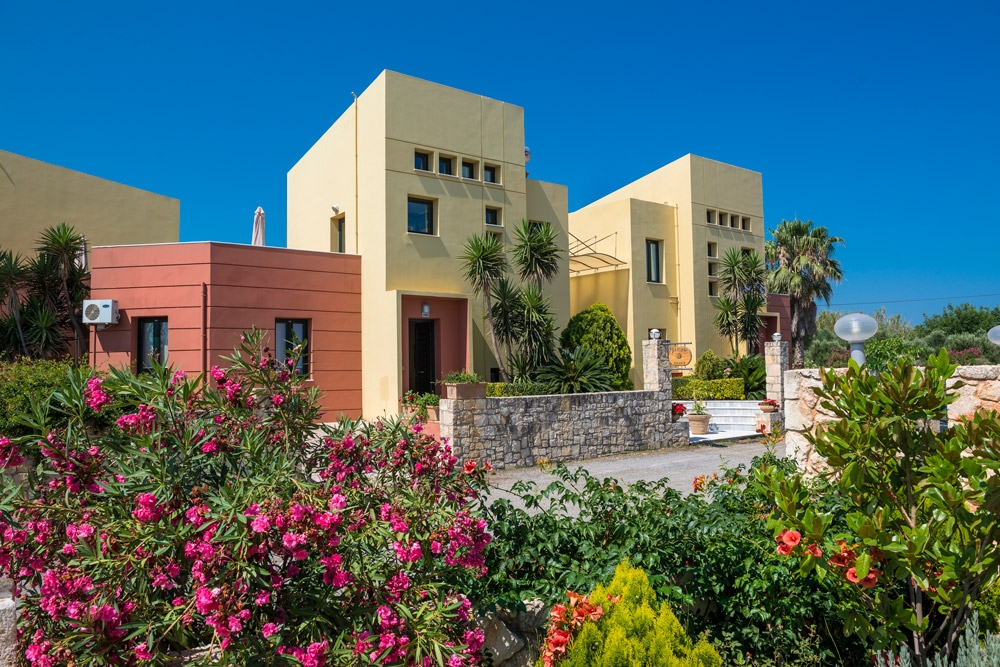Gerani, Chania, is a beautiful coastal village located a couple of kilometers east of Pyrgos Psilonerou and Daphnis Villas, and between Pyrgos Psilonerou and Platanias resort. Gerani enjoys an excellent reputation for its agricultural products like olive oil, wine and, of course, oranges.
Gerani, although is not as much advertised as its neighboring Platanias in Crete tourist guides, has an equally wonderful beach. Gerani beach is sandy and has a length of about 2,5 kilometers, near which you can find plenty of trees and vegetation – after all, Gerani is a fertile agricultural village.
The beach of Gerani, Chania, is less crowded and quieter than the beach in Platanias, but in most of its great length it is organized, with sun beds, parasols, W.C., showers etc. Near the beach of Gerani there are plenty of cafés, bars, restaurants, taverns, shops and mini markets. In Gerani you can also find a doctor’s office.
Gerani historically is consisted of two settlements: Kato Gerani (“Lower Gerani”), and Ano or Palaio Gerani (“Upper or Old Gerani”) which have a distance of less than one kilometer.
Around Gerani, Chania
The area around Gerani and Pyrgos Psilonerou has numerous traditional villages, where you can meet the heart and soul of rural Chania and West Crete. All around the area there is rich vegetation of plane trees, orange trees, eucalyptus and cypresses.
Outside Palaio Gerani and close to the village there is an interesting cloister. Another interesting religious sight in the area is the small church of Panagia (“Virgin Mary”) located between Gerani and Manoliopoulo villages. At this church, an interesting traditional local feast is held on September 8th.
Very close to Palaio Gerani, and on the road from Gerani to Modi village lays a partly ruined house, where the famous Cretan writer Ioannis Kondilakis served as a teacher at the beginning of his career. There is a memorial plaque at the place reminding of the house’s history.
Finally, something you should not forget to do when visiting the traditional, picturesque small villages in the area is to also taste, apart from the local agricultural produce, the local spirit: “raki”, or “tsikoudia” is made here like it was made centuries ago. Or, if you want something lighter, go for a delicious Greek coffee!
The historic significance of Gerani, Chania
Gerani, Chania, historically is mentioned as a big village in the 16th century, during the Venetian era of Crete, but its history goes much deeper into the past.
As a verse from Homer suggests, and as some archaeologists believe, the place where Gerani is located used to be in ancient Minoan years the exact location of ancient Kidonia, one of the most powerful cities in Crete for centuries. In fact, the name Chania originates from the name Kydonia. Ancient Kydonia was famous for its gorgeous temple of Vritomartis, a well known local goddess.
Gerani is also the historic location where, in 1867, during the Cretan revolution, a fierce fight took place between the Ottoman and the Cretan forces. Gerani village is also the birthplace of one of the most known Cretan revolutionists (or “hainides” as they were called): Ioannis Papadogiorgakis was born in Gerani, Chania in 1798. His nickname was “Geraniotis”, after his birthplace.
The village of Gerani, has many things to offer to the visitor. Apart from its magnificent beach, the history and tradition in the area are kept alive.
In Gerani, Chania, you can come closer to the Cretan heartland without leaving the beach!
